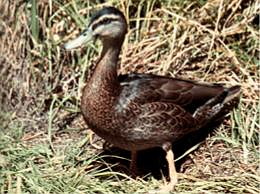
The Mariana mallard or Oustalet's duck is an extinct species of duck of the genus Anas that was endemic to the Mariana Islands. Its taxonomic status is debated, and it has variously been treated as a full species, a subspecies of the mallard or of the Pacific black duck, or sometimes as a subspecies of the Indian spot-billed duck.
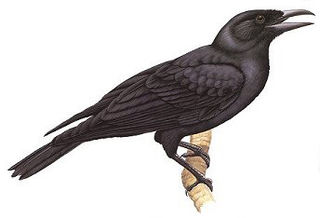
The Mariana crow is a species of the crow family from the tropical Western Pacific. It is a glossy black bird about 15 inches (38 cm) long and known only from the islands of Guam and Rota.
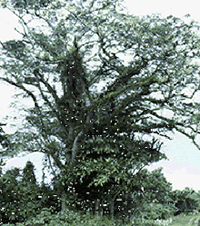
Serianthes nelsonii is a large tree endemic to Guam and Rota of the Mariana Islands. Only one mature tree exists on Guam, while 121 mature trees have been identified on Rota since 1984.
Myrsine mezii, the Hanapepe River colicwood, is a species of tree in the primrose family. It is endemic to the island of Kauai in Hawaii. It is threatened by habitat loss. It is a federally listed endangered species of the United States.
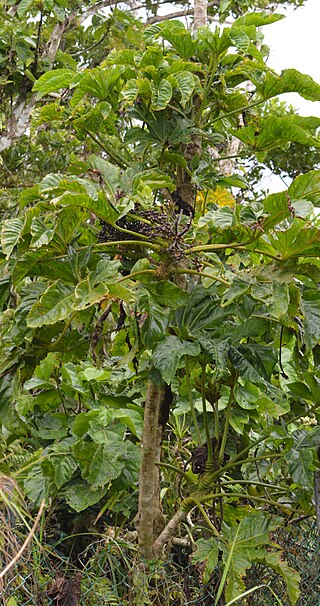
Osmoxylon mariannense is a rare species of tree in the family Araliaceae. It is endemic to Rota, one of the Northern Mariana Islands. A 2002 survey found only eight mature trees remaining on the island. A resident of the commonwealth, the tree is federally listed as an endangered species of the United States.
Psychotria grandiflora, the largeflower wild coffee, large-flowered balsamo or kopiko, is a species of plant in the family Rubiaceae endemic to the island of Kauai in the Hawaiian Islands. It grows in rainforest habitat. There are ten small populations remaining, with a total of no more than 30 individuals. This plant was federally listed as an endangered species of the United States in 2010.
Psychotria hobdyi, the milolii kopiwai, Hobdy's wild-coffee or kopiko, is a species of plant in the family Rubiaceae. It is endemic to the Hawaiian Islands, where it is known only from the island of Kauai. There are about 10 populations for a total of about 120 individuals. It is threatened by habitat loss and was federally listed as an endangered species of the United States in 2010.
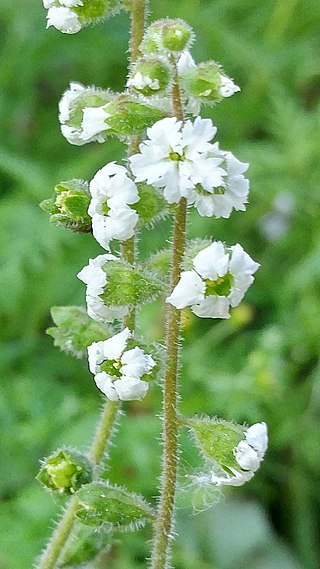
Lithophragma maximum, known by the common name San Clemente Island woodland star, is a rare species of flowering plant in the saxifrage family. It is endemic to San Clemente Island, one of the eight Channel Islands of California. It is known from only about four kilometers of rocky coastal cliffs on the edge of the island. The plant was thought to be extinct until a few specimens were rediscovered in 1979. Only 200 individuals were tallied in a 1996 survey. In 1997 the plant was listed as an endangered species on the federal level.
Cranichis ricartii is a rare species of orchid known by the common name Puerto Rico helmet orchid. It is native to Puerto Rico, where it is known from three locations in one forest. The plant has also been seen in Guadeloupe. The plant's rarity is the main reason for its listing as an endangered species of the United States.
Cyrtandra polyantha is a rare species of flowering plant in the African violet family known by the common names Niu Valley cyrtandra. It is endemic to the Hawaii, where it is known only from the Koʻolau Mountains of Oahu. In 2007 there were only two populations containing a total of 46 mature plants, but one of the two populations is made up of a single individual. It was federally listed as an endangered species in 1994. Like other Hawaiian Cyrtandra it is called ha`iwale.
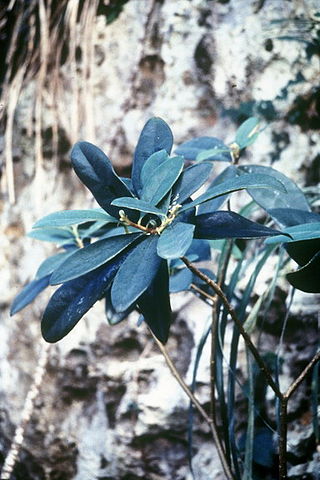
Daphnopsis hellerana is a rare species of flowering plant in the genus Daphnopsis of the family Thymelaeaceae. It is endemic to Puerto Rico, where there were only four populations remaining in 1992, with a total of 125 individuals. It was federally listed as an endangered species of the United States in 1988.
Dryopteris crinalis is a species of fern known as the serpent woodfern. It is endemic to Hawaii, where it is known from the main islands.
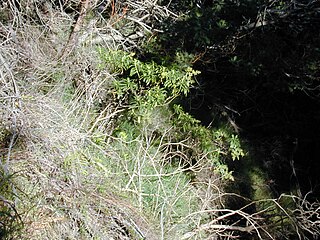
Dubautia plantaginea is a rare species of flowering plant in the aster family known by the common name plantainleaf dubautia. It is endemic to Hawaii where it is the only member of the silversword alliance that is found on all six of the largest islands. Two of the three subspecies are rare and endangered. Like other Dubautia this plant is called na`ena`e.
Exocarpos luteolus is a rare species of flowering plant in the sandalwood family known by the common names leafy ballart or heau. It is endemic to Hawaii, where it is known only from the island of Kauai. There are eight populations remaining, for a total global population of only 39 individuals. The plant was federally listed as an endangered species of the United States in 1994.
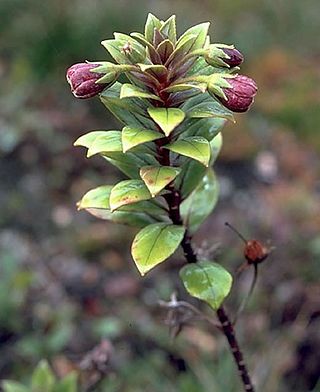
Lysimachia daphnoides is a rare species of flowering plant in the Primulaceae known by several common names, including Pacific loosestrife, lehua makanoe, kolekole lehua, and kolokolo kuahiwi. It is endemic to Hawaii, where there are only three populations remaining on the island of Kauai. It was federally listed as an endangered species of the United States in 2010.
Lysimachia scopulensis is a rare species of flowering plant in the family Primulaceae known by the common name shiny-leaf yellow loosestrife. It is endemic to Hawaii, where there are two small populations on the island of Kauai. It was federally listed as an endangered species of the United States in 2010.

Remya kauaiensis is a rare species of flowering plant in the family Asteraceae, known by the common name of Kauai remya. It is endemic to Hawaii, where it is known only from the island of Kauai. It is threatened by the degradation of its habitat. It is a federally listed endangered species of the United States.
Schiedea apokremnos is a rare species of flowering plant in the family Caryophyllaceae known by the common names Kauai schiedea, Na Pali Coast schiedea, and ma`oli`oli. It is endemic to Hawaii, where it is known only from the island of Kauai. It is threatened by the degradation of its habitat. It is a federally listed endangered species of the United States.
Schiedea spergulina is a rare species of flowering plant in the family Caryophyllaceae known by the common name canyon schiedea and spreading schiedea. It is endemic to Hawaii, where it is known only from the island of Kauai. It is threatened by the degradation and destruction of its habitat. There are two varieties of this plant, one federally listed as an endangered species of the United States, and the other listed threatened.
Stenogyne kealiae is a rare species of flowering plant in the mint family known by the common name Keal's stenogyne. It is endemic to Hawaii, where it is known only from the island of Kauai. It was federally listed as an endangered species of the United States in 2010.










